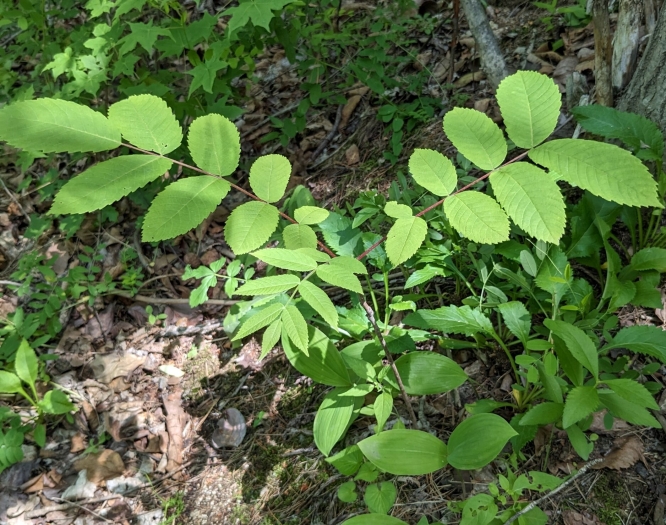Manchurian Walnut
(Juglans mandshurica)
Manchurian Walnut (Juglans mandshurica)
/
/

Repina Tatyana
CC BY 4.0
Image By:
Repina Tatyana
Recorded By:
Copyright:
CC BY 4.0
Copyright Notice:
Photo by: Repina Tatyana | License Type: CC BY 4.0 | License URL: http://creativecommons.org/licenses/by/4.0/ | Rights Holder: Repina Tatyana | Publisher: iNaturalist | Date Created: 2023-06-26T13:38:22-07:00 |

























Estimated Native Range
Summary
Juglans mandshurica, commonly known as Manchurian walnut, is a deciduous tree native to mixed broadleaf and conifer forests in Northeast Asia, including China, Taiwan, Japan, the Russian Far East, North Korea, and South Korea. It can grow up to 82 feet (25 meters) tall and is known for its exceptional hardiness, tolerating temperatures as low as -45°C (-49°F). The tree has a rounded crown with pinnate leaves that can reach up to 35 inches (90 cm) in length, contributing to its stately appearance. Male flowers are presented in drooping catkins, while female flowers are wind-pollinated and less conspicuous. The nuts, which are encased in a thick husk, ripen in August-October and are less commonly known as tigernuts.
The Manchurian walnut is valued for its ornamental qualities in colder temperate regions, where it is used in large gardens and parks. Its timber is prized for fine woodworking and furniture making. Unlike other walnut species, Juglans mandshurica contains fewer allelopathic compounds, which means it is less likely to inhibit the growth of surrounding plants through chemical means. This tree prefers full sun to partial shade and thrives in well-drained soils. It is relatively low-maintenance once established but can be susceptible to walnut blight and pests such as the walnut caterpillar.CC BY-SA 4.0
The Manchurian walnut is valued for its ornamental qualities in colder temperate regions, where it is used in large gardens and parks. Its timber is prized for fine woodworking and furniture making. Unlike other walnut species, Juglans mandshurica contains fewer allelopathic compounds, which means it is less likely to inhibit the growth of surrounding plants through chemical means. This tree prefers full sun to partial shade and thrives in well-drained soils. It is relatively low-maintenance once established but can be susceptible to walnut blight and pests such as the walnut caterpillar.CC BY-SA 4.0
Plant Description
- Plant Type: Tree
- Height: 40-60 feet
- Width: 30-40 feet
- Growth Rate: Slow, Moderate
- Flower Color: Green, Yellow
- Flowering Season: Spring
- Leaf Retention: Deciduous
Growth Requirements
- Sun: Full Sun
- Water: Medium
- Drainage: Medium, Fast
Common Uses
Bird Garden, Edible*Disclaimer: Easyscape's listed plant edibility is for informational use. Always verify the safety and proper identification of any plant before consumption.
Natural Habitat
native to mixed broadleaf and conifer forests in Northeast Asia, including China, Taiwan, Japan, the Russian Far East, North Korea, and South Korea
Other Names
Common Names: Garaenamu, Chinese Walnut, Hu Tao Qiu
Scientific Names: , Juglans mandshurica, Juglans ailanthoides var. cordiformis, Juglans ailantifolia var. cordiformis, Juglans cathayensis, Juglans cathayensis var. formosana, Juglans collapsa, Juglans cordiformis, Juglans draconis, Juglans draconis subsp. formosana
GBIF Accepted Name: